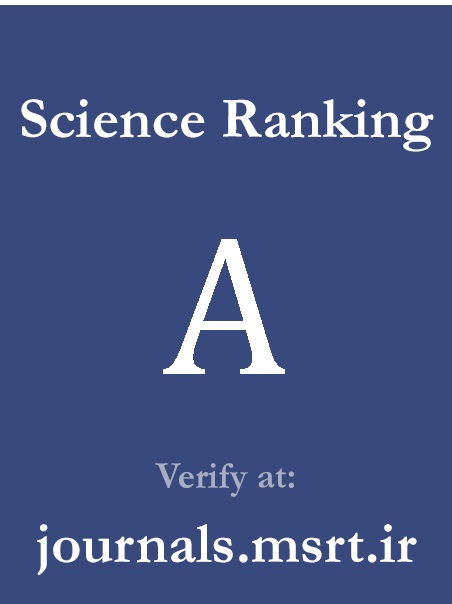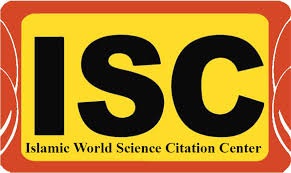The Impact of Online Cognitive-based Instruction through Bloom's Taxonomy on Iranian EFL Learners' Reading Comprehension Ability and Critical Thinking Skill
Keywords:
Online English instruction , Bloom’s Taxonomy, Iranian EFL learners, Reading comprehension ability, Critical thinking skillsAbstract
Purpose: This study examined the simultaneous impact of online cognitive-based instruction through Bloom’s Taxonomy on Iranian EFL learners’ reading comprehension ability and critical thinking skill.
Methods and Materials: Eighty-four homogeneous intermediate Iranian EFL learners were selected via Oxford Placement Test (OPT) and randomly assigned into experimental (n=41) and control (n=43) groups. Both groups participated in pretesting, twelve sessions of online instruction via Adobe Connect, and post-testing. The experimental group received instruction designed using Bloom’s Taxonomy levels across reading texts, while the control group received instruction based on the conventional Grammar Translation Method. Data were collected using a validated researcher-made L2 reading comprehension test and the California Critical Thinking Skills Test (CCTST). Data analysis was conducted using SPSS, employing One-Way ANCOVA and Paired-samples T-tests.
Findings: The results indicated that cognitive-based online instruction significantly improved both reading comprehension ability (F(1,81)=17.03, p<.01, partial η²=.174) and critical thinking skill (F(1,81)=122.97, p<.01, partial η²=.603) in the experimental group compared to the control. Additionally, the experimental group showed a significantly greater improvement in reading comprehension (M=15.48, SD=3.22) compared to critical thinking skill (M=12.41, SD=3.21), t(40)=4.53, p<.05, Cohen’s d=.980, highlighting stronger gains in reading.
Conclusion: Results suggest that reading comprehension improves more substantially than critical thinking skills under such instructional conditions. This approach offers valuable insights for language curriculum developers, teachers, and policy makers aiming to improve language instruction quality and prepare learners for 21st-century educational challenges.
Downloads
References
Abbasian, G., & Modarresi, S. (2022). The effectiveness of synchronous online interactions in enhancing reading comprehension and critical thinking skills. Journal of Language Teaching and Research, 13(3), 456-470. https://doi.org/10.17507/jltr.1303.10
Abdollahi, M., & Moiinvaziri, M. (2023). Exploring cognitive-based learning through Bloom's Taxonomy in online environments. International Journal of Educational Technology, 14(2), 123-135. https://doi.org/10.1234/ijet.v14i2.5678
Abdulrahman, S. A. (2023). The Effects of Revised Bloom's Taxonomy Enriched Instruction on EFL Learners' Writing Performance in an Academic Writing Course. International Journal of Social Sciences and Educational Studies, 10(3), 290. https://doi.org/10.23918/ijsses.v10i3p290
Abosalem, Y. (2016). Assessment Techniques and Students' Higher-Order Thinking Skills. https://doi.org/10.11648/j.ijsedu.20160401.11
Ahmadian, M., Sanaeifar, S. H., & Marzban, A. (2024). Augmenting Iranian Students' Autonomy and Reading Comprehension Through Implementation of Dynamic Assessment. Journal of Applied Linguistics Studies, 3(1), 70-89. https://www.google.com/url?sa=t&source=web&rct=j&opi=89978449&url=https://journals.iau.ir/article_707721_dfbff9ea0cd4bdb6d5d82ed4308dcad4.pdf&ved=2ahUKEwiC_eT57paOAxW1KvsDHYmFPHoQFnoECBgQAQ&usg=AOvVaw3_veUKemSB4jL5F42G0qOQ
Akbari, J., Tabrızi, H. H., & Chalak, A. (2021). Effectiveness of virtual vs. non-virtual teaching in improving reading comprehension of Iranian undergraduate EFL students. Turkish Online Journal of Distance Education, 22(2), 272-283. https://doi.org/10.17718/tojde.907585
Amiri, F., & Maftoon, P. (2010). The role of reading comprehension in language learning: A focus on EFL learners. Iranian Journal of Language Studies, 4(1), 25-40.
Anderson, L. W., & Krathwohl, D. R. (2001). A Taxonomy for Learning, Teaching, and Assessing: A Revision of Bloom's Taxonomy of Educational Objectives. https://eduq.info/xmlui/handle/11515/18824
Asih, Z., & Ria, A. (2024). Tapping into The Interactive Online Classroom: The Use of Multimedia in E-Learning.
Ayoub, A., Childs, M., & Taylor, H. (2024). Emergency Remote Teaching during the COVID-19 pandemic: Challenges and solutions in higher education. Educational Research Review, 19, 100-115.
Bao, W. (2020). The Challenges of Online Language Instruction.
Bozan, A. (2024). The importance of reading proficiency in EFL contexts: A review of recent literature. Language Education in Asia, 14(1), 45-60.
Ceylan, N. O., & Akar, H. (2018). Bloom's Taxonomy in EFL Instruction: Effects on Reading Comprehension.
Chandio, M. T., Zafar, N., & Solangi, G. M. (2021). Bloom's Taxonomy: Reforming Pedagogy Through Assessment. Journal of Education and Educational Development, 8(1). https://doi.org/10.22555/joeed.v8i1.308
Chen, X. (2019). Online Education and Its Impact on Learning Outcomes.
Crystal, D. (1999). The Cambridge Encyclopedia of the English Language. Cambridge University Press. https://books.google.com/books?hl=en&lr=&id=PBnCDwAAQBAJ&oi=fnd&pg=PR1&dq=Crystal,+D.+(1999).+The+Cambridge+Encyclopedia+of+the+English+Language,+Cambridge+University+Press.+%09&ots=U5LpFSBqcR&sig=3OMfQb9bC_ClXrZd7k160sQwCw4
Derakhshan, A. (2021). The Role of Emergence Distance Education (EDE) in the Learning of English Language Skills during COVID-19 Pandemic: Voices from Iranian Undergraduate EFL Students. Journal of Teaching Language Skills. https://tesl.shirazu.ac.ir/article_6172_d617d1c8d7a3ca2563f5fd3c5f91ade2.pdf
Divsar, H. (2019). Critical thinking in language education: A review of literature and implications for practice. Journal of Language and Linguistic Studies, 15(2), 45-60.
Etemadfar, P., Soozandehfar, S. M. A., & Namaziandost, E. (2020). An account of EFL learners' listening comprehension and critical thinking in the flipped classroom model. Cogent Education, 7(1). https://doi.org/10.1080/2331186x.2020.1835150
Facione, P. A. (2023). Critical thinking: What it is and why it counts. Insight Assessment. https://www.academia.edu/download/71022740/what_why98.pdf
Ferris, D., & Hedgcock, J. (2023). Teaching L2 Composition: Purpose, Process, and Practice. Routledge. https://doi.org/10.4324/9781003004943
Gacs, A., Goertler, S., & Spasova, S. (2020). Planned online language education versus crisis‐prompted online language teaching: Lessons for the future. Foreign Language Annals, 53(2), 380-392. https://doi.org/10.1111/flan.12460
Gilakjani, A. P., & Sabouri, N. B. (2016). The significance of listening comprehension in English language teaching: A review of literature. International Journal of Listening, 30(1), 1-21. https://www.researchgate.net/profile/Abbas-Pourhosein-Gilakjani/publication/306311479
Gimeno-Sanz, A. (2016). Teaching critical reading: Strategies for developing reading skills in EFL learners. Elt Journal, 70(3), 280-290.
Horvathova, B., & Naďová, L. (2021). Developing Critical Thinking in Reading Comprehension of Texts for Specific Purposes at all Levels of Bloom's Taxonomy. Journal of Teaching English for Specific and Academic Purposes, 1-1. https://doi.org/10.22190/jtesap2101001h
Huang, Y. M., & et al. (2024). The integration of Bloom's Taxonomy into online learning environments: Implications for EFL teaching practices. Computers & Education, 177, 104-120.
Hui, E. S. Y. E. (2024). Promoting cognitive skills in AI-supported learning environments: the integration of Bloom's taxonomy. Education 3-13, 1-11. https://doi.org/10.1080/03004279.2024.2332469
Huyen, N., & Ngoc, T. T. (2024). The relationship between critical thinking and reading comprehension among EFL learners: A case study in Vietnam. Asian EFL Journal, 26(1), 1-15.
Kamali, S., & Fahim, M. (2011). Reading comprehension difficulties among Iranian EFL learners: Causes and solutions. Journal of Language Teaching and Research, 2(5), 1038-1045.
Krathwohl, D. R. (2002). A Revision of Bloom's Taxonomy: An Overview. Theory Into Practice, 41(4), 212-218. https://doi.org/10.1207/s15430421tip4104_2
Lai, E. R., & Kritsonis, A. (2006). The Advantages and Challenges of Online Learning in the EFL Classroom.
Lemay, D., & et al. (2021). The impact of COVID-19 on higher education: Challenges and opportunities for online learning platforms like Adobe Connect and Zoom. Educational Technology Research and Development, 69(2), 305-320.
Lourdusamy, R., Magendiran, P., & Fonceca, C. M. (2022). Analysis of Cognitive Levels of Questions With Bloom's Taxonomy. International Journal of Software Innovation, 10(1), 1-22. https://doi.org/10.4018/ijsi.297922
Maani, D. A., & Shanti, Z. (2023). Technology-Enhanced Learning in Light of Bloom's Taxonomy: A Student-Experience Study of the History of Architecture Course. Sustainability, 15(3), 2624. https://doi.org/10.3390/su15032624
Magliano, J., & et al. (2011). The role of reading comprehension in developing critical thinking skills in EFL learners: An empirical study. Reading Psychology, 32(5), 423-442.
Melati, S. E., & Rasyid, F. (2023). Student's Critical Thinking towards Reading Comprehension using Revised Bloom's Taxonomy. IREELL: Indonesian Review of English Education, Linguistics, and Literature. https://doi.org/10.30762/ireell.v1i2.1947
Mundir, A. A. A., Keezhatta, M. S., Amal, B. K., Sharma, S., Shanan, A. J., Ali, M. H., & Haidari, M. M. F. (2022). The Comparative Effect of Online Instruction, Flipped Instruction, and Traditional Instruction on Developing Iranian EFL Learners' Vocabulary Knowledge. Education Research International, 2022, 1-9. https://doi.org/10.1155/2022/6242062
Najafi, M., & et al. (2021). Transitioning to online learning during COVID-19: Challenges faced by Iranian universities. Journal of Educational Technology Systems, 49(3), 250-265.
Nguyen, D. T., & Nguyen, T. H. G. (2023). Research on the relationship between reading comprehension questions, Bloom's taxonomy, and critical thinking competence to adapt to the practical needs of teaching reading comprehension developing critical thinking: a case study of Vietnam. International Journal of Education Humanities and Social Science. https://doi.org/10.54922/ijehss.2023.0513
Ni, M., Ratminingsih, I., & Gede, B. (2023). The Integration of Technology in English Language Teaching to Stimulate Students' Critical Thinking. Language Circle. https://doi.org/10.15294/lc.v17i2.39097
Normuratova, V. I. (2024). Exercises for developing critical and digital thinking in teaching foreign languages. Frontline Social Sciences and History Journal. https://doi.org/10.37547/social-fsshj-04-10-06
Nurmatova, S., & Altun, M. (2023). A Comprehensive Review of Bloom's Taxonomy Integration to Enhancing Novice EFL Educators' Pedagogical Impact. Arab World English Journal, 14(3), 380-388. https://doi.org/10.24093/awej/vol14no3.24
Paesani, K. (2020). Teacher professional development and online instruction: Cultivating coherence and sustainability. Foreign Language Annals, 53(2), 292-297. https://doi.org/10.1111/flan.12468
Piñero, J., & Cañedo, J. A. (2024). Reading comprehension abilities are essential for educational growth. Educational Studies, 50(4), 973-985.
Pujawan, I. G. N., Rediani, N. N., Antara, I. G. W. S., Putri, N. N., & Bayu, G. W. (2022). Revised Bloom Taxonomy-Oriented Learning Activities to Develop Scientific Literacy and Creative Thinking Skills. Jurnal Pendidikan Ipa Indonesia, 11(1), 47-60. https://doi.org/10.15294/jpii.v11i1.34628
Richards, J. C., & Renandya, W. A. (2003). Methodology in Language Teaching: An Anthology of Current Practice. Cambridge University Press. https://doi.org/10.1017/CBO9780511667190
Saragih, E., Sinulingga, S., Bukit, B., & Wiranata, V. (2022). Reconstructing cognitive levels of test items in Indonesian Textbook for vocational school. KEMBARA Journal of Scientific Language Literature and Teaching, 8(1), 15-24. https://doi.org/10.22219/kembara.v8i1.19759
Setyowati, Y., Susanto, S., & Munir, A. (2022). A revised bloom's taxonomy evaluation of formal written language test items. World Journal on Educational Technology Current Issues, 14(5), 1317-1331. https://doi.org/10.18844/wjet.v14i5.7296
Shaikh, S., Daudpotta, S. M., & Imran, A. S. (2021). Bloom's Learning Outcomes' Automatic Classification Using LSTM and Pretrained Word Embeddings. IEEE Access, 9, 117887-117909. https://doi.org/10.1109/access.2021.3106443
Song, L. (2021). Online education during the pandemic: Lessons learned from the transition to remote learning. Journal of Online Learning Research, 7(2), 145-162.
Stevani, M., & Tarigan, K. E. (2022). Evaluating English Textbooks by Using Bloom's Taxonomy to Analyze Reading Comprehension Question. SALEE Study of Applied Linguistics and English Education, 4(1), 1-18. https://doi.org/10.35961/salee.v0i0.526
Thornhill-Miller, B., & et al. (2023). Critical thinking skills for the digital age: Preparing students for contemporary challenges. Journal of Educational Psychology, 115(2), 245-260.
Troussas, C., Krouska, A., & Sgouropoulou, C. (2022). Enriching Mobile Learning Software with Interactive Activities and Motivational Feedback for Advancing Users' High-Level Cognitive Skills. Computers, 11(2), 18. https://doi.org/10.3390/computers11020018
Wolhuter, C. C., & Jacobs, L. J. (2021). The impact of COVID-19 on education systems worldwide: A comparative analysis. International Journal of Educational Development, 86.
Yusuf, F., & et al. (2024). Fostering reading comprehension strategies in EFL contexts: Implications for teacher training programs. Education + Training, ahead-of-print, ahead-of-print.
Zhang, J. (2018). Multimedia Resources and EFL Learning: Enhancing Critical Thinking and Comprehension Skills. https://journals.sagepub.com/doi/abs/10.1177/2158244018820386
Downloads
Published
Submitted
Revised
Accepted
Issue
Section
License
Copyright (c) 2025 Shahrzad Pirzad Mashak (Author); Neda Gharagozloo; Neda Hedayat (Author)

This work is licensed under a Creative Commons Attribution-NonCommercial 4.0 International License.










